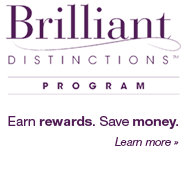Dermatology Facts—Acne
Nearly everyone has acne at some point in their life. Acne usually begins soon after the start of puberty. There are many different factors that play a role in the development of acne. Sebum, produced by the oil glands in the skin, is increased at the time of puberty. The hair follicle, the site of acne, may get plugged with dead skin cells and sebum. Then bacteria may accumulate and lead to inflammation resulting in pimples that cause redness and discomfort and may lead to scarring.
Types of acne lesions:
- A blackhead (open comedone) is formed when the pressure of the sebum and dead cells forces the plug to the surface of the skin. The color of the blackhead is caused by skin pigment and dead skin cells. Blackheads are not caused by dirt and dirt does not cause acne.
- A whitehead (closed comedone) occurs when the plug remains below the skin surface.
- When pressure from the sebum and dead cells becomes great, the trapped material may seep through the walls of the follicle and cause redness and discomfort. This forms the pimple (papule) and pus bump (pustule). A cyst is a particularly deep and uncomfortable swelling associated with acne.
- Papules, pustules and cysts may cause scarring. Once this occurs, the change is permanent. However, a dermatologist may perform certain procedures to improve the cosmetic appearance.
Prevention:
If you are prone to acne, it is best to avoid any topical creams, moisturizers or cosmetics unless they are labeled “non-comedogenic.” These products are widely available and specifically marked. They are usually water-based and/or oil-free.
Stress and emotional tension may contribute to an outbreak of acne. Foods do not cause acne.
Treatment:
There are a number of different ways to treat acne, and the therapy is dependent on the severity and the type of acne.
- Cleansers that contain glycolic acid, salicylic acid, or benzoyl peroxide help dry the skin, remove debris and unclog plugged pores.
- Glycolic acid solution can also be used to dry oily skin and remove superficial clogged pores (whiteheads and blackheads).
- Topical retinoids (Retin-A, Differin, Tazorac) are medications that loosen the plugs in clogged pores. They are also helpful for removing superficial clogged pores.
- Topical antibiotics are useful to destroy the skin bacteria that lead to inflammatory lesions (pimples and pustules). Topical antibiotics may be used alone or in combination with other agents.
- Benzoyl peroxide is a peeling agent that dries the skin and helps to prevent the growth of bacteria.
- Oral antibiotics are sometimes prescribed for more significant acne lesions. They will decrease inflammation and decrease bacteria in and around the acne lesions. Oral antibiotics are most effective for acne with many papules, pustules and cysts.
- Isotretinoin (Accutane) is an oral medication that should be used only for treatment of severe, recalcitrant, or scarring forms of acne. There are many possible side effects associated with the use of accutane. It causes severe birth defects if taken during pregnancy, and in some people it can cause depression. Consult your doctor for a discussion of these and other possible side effects if you are considering taking Accutane.
Not recommended for acne:
- Washing and scrubbing with harsh soaps and brushes. This may make acne worse, as well as dry and irritate the skin. Gentle cleansing is usually best.
- Sunlight and tanning beds may offer temporary relief by peeling. However, sunlight is a significant cause of aging and wrinkling of the skin and it may lead to skin cancer.

